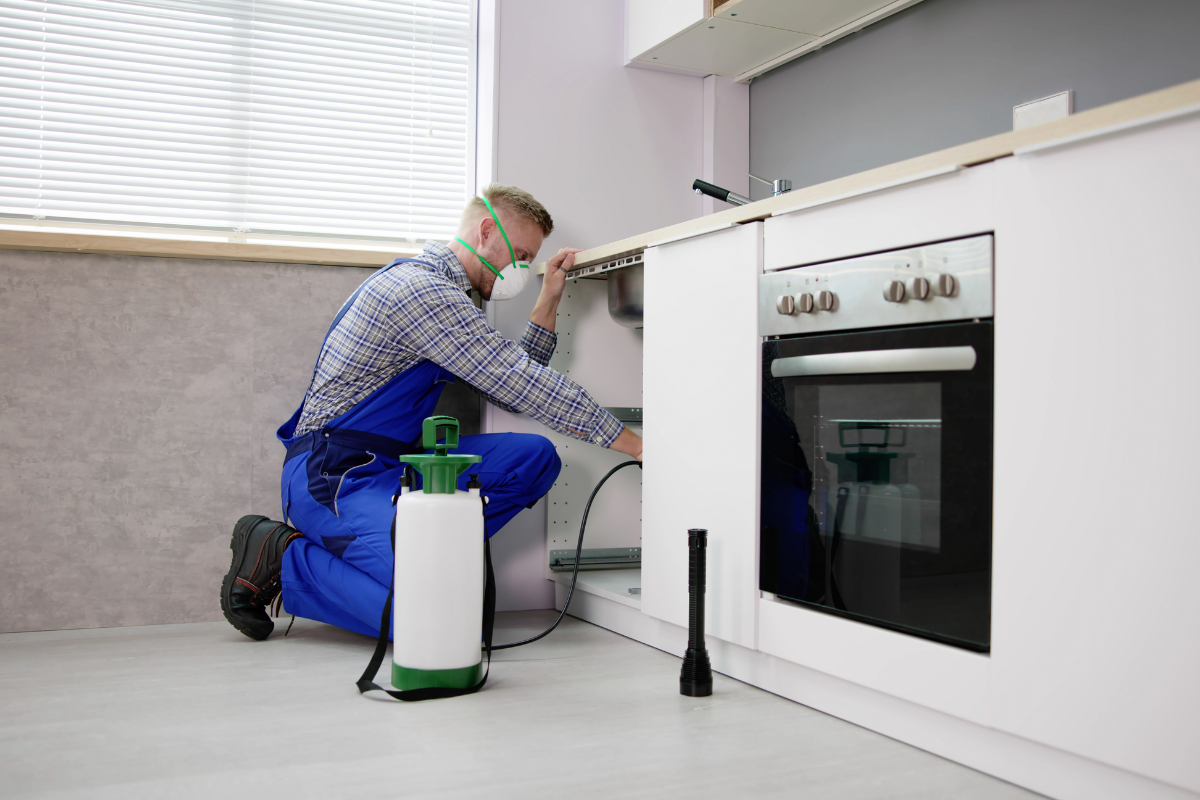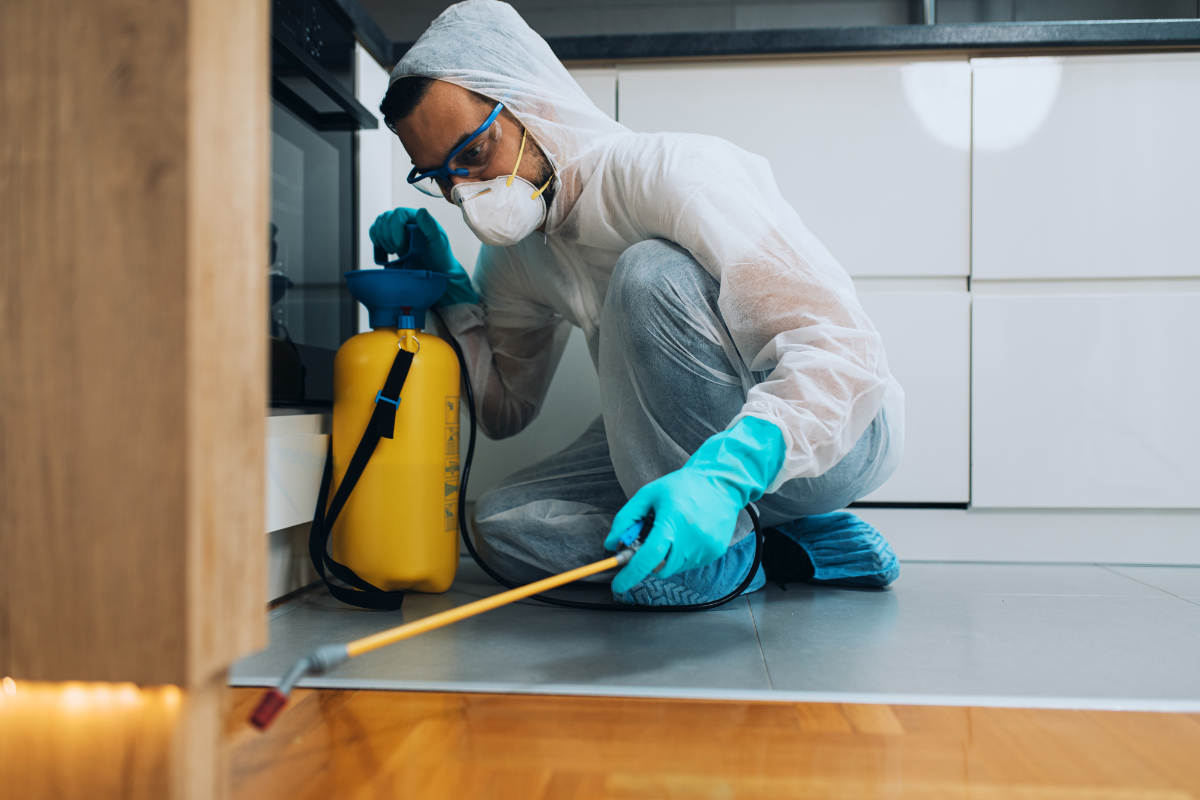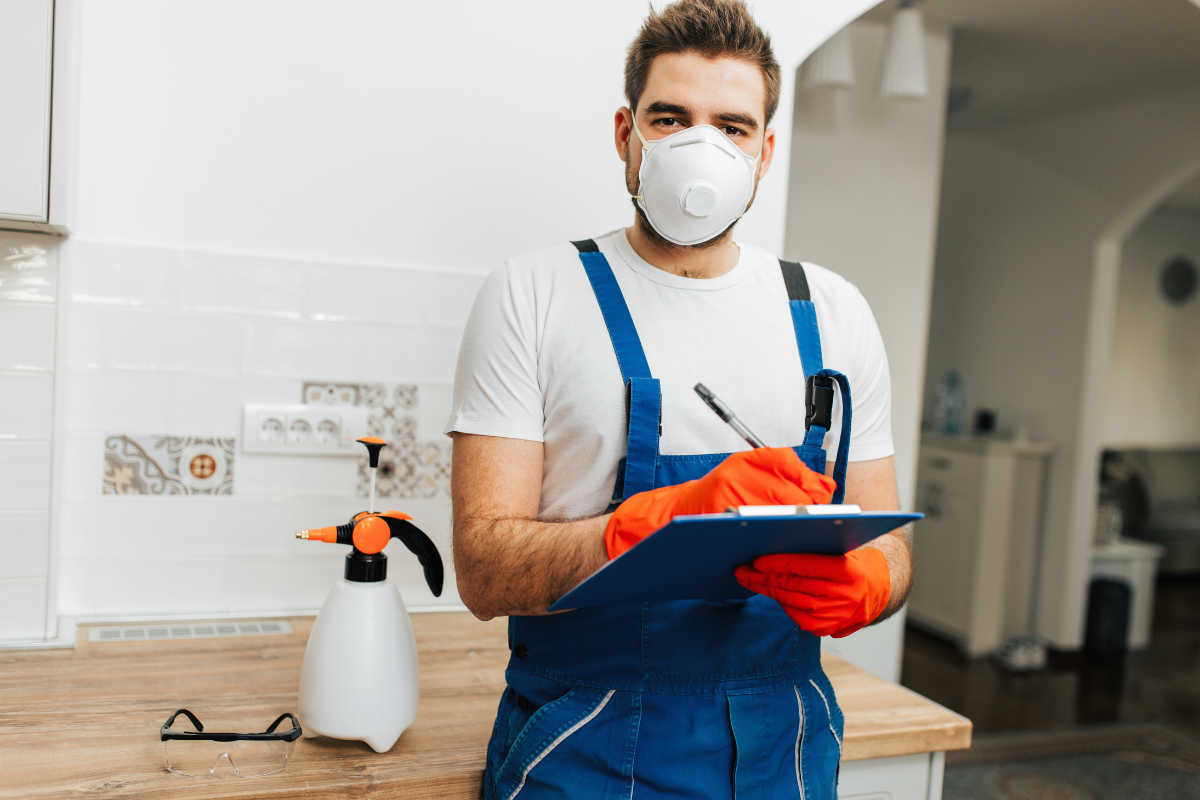


Families call me with the same tension in their voice. They need pests gone, but they won’t accept a treatment that leaves their living room smelling like a chemical experiment or their toddler’s toys feeling risky. That is the right instinct. You can get effective, long-lasting results without compromising child safety, but only if your pest control company commits to thoughtful materials, precise application, and a service model built around prevention as much as elimination.
I’ve crawled under homes where a previous contractor fogged the entire crawl space with broad-spectrum insecticide, hoping to silence ants and roaches in one pass. It worked for a few weeks, then the pests regrouped. The residents were left with residue they didn’t want and a bill that solved little. The better approach starts before a single product is opened. It begins with inspection, exclusion, and the least-risk tools that still deliver.
The risk lens: how pros evaluate products for homes with kids
When selecting a pest control service, ask them to explain how they weigh toxicity, exposure, and persistence. Professionals evaluate three variables.
First, toxicity, or how harmful a compound is at a given dose. Many modern materials used by a reputable pest control company have low mammalian toxicity and target pathways found in insects but not people. Second, exposure, which matters more than theoretical toxicity. A gel bait inside a wall void carries far less exposure potential for a child than a broadcast spray along a baseboard. Third, persistence, the amount of time a product remains active. Long residuals can be helpful outdoors, but indoors your contractor should aim for short persistence and precise placement.
A child-safe program borrows from public health: reduce the hazard, reduce the contact, and limit the time window.
What child-friendly pest control actually looks like in practice
Companies that prioritize families lead with inspection and exclusion. They then use targeted, low-odor, low-volatility products, applied exactly where pests live and travel, not where kids crawl and play. Look for crews that arrive with a flashlight, moisture meter, pry bar for door sweeps, and a caulking kit, not just a sprayer.
For common home invaders like ants, German cockroaches, and pantry pests, the backbone should be baits and dusts placed out of reach, coupled with sanitation guidance. For occasional invaders like earwigs, silverfish, and millipedes, sealing gaps and managing moisture usually outperforms blanket treatments.
When there is a destructive organism such as termites, the conversation changes. Termite control services still must be safe, but the stakes are structural. The right contractor will explain the differences among soil treatments, baiting systems, and localized wood treatments, and tailor those to your home’s layout and your family routines.
Materials that belong in a family-first toolkit
I keep a mental checklist of materials that consistently work while minimizing risk indoors. Each tool has a place, and none is a one-size answer.
Gel baits with insect growth regulators. For ants and cockroaches, gels and bait stations are the first line. Gels can be placed in cracks, under appliances, and in voids. Growth regulators act like birth control for insects, undermining the colony’s future without relying on heavy knockdown. Properly placed, these keep the active ingredient away from tiny fingers.
Bait stations with secure housings. For floor-level ant trails or rodents, a tamper-resistant station adds a physical barrier. I’ve seen toddlers attempt to pry at them, which is why I prefer locking designs that require a key. The bait is formulated to attract the pest, not children or pets.
Desiccant dusts like silicon dioxide and boric acid. Applied in attics, wall voids, and switch plate openings, these destroy the waxy protective layer of insects through a mechanical action. They don’t off-gas and have no odor. The trick is restraint. A pinch goes a long way. Overdusting can cause drift, which we avoid with hand dusters and careful application.
Microencapsulated spot treatments. When a liquid application is necessary indoors, a microencapsulated formulation stays put better on the surface and often carries a lower odor profile. It should be applied into cracks and crevices, behind baseboards, and in expansion joints, never as a blanket broadcast across floors.
Botanical aerosols for knockdown in sealed areas. Plant-derived products like certain essential oil blends can quickly suppress exposed insects. They still need respect, since oils have scents and can be irritants. I reserve them for a sealed void or a wasp nest removal where we can ventilate.
Outdoors, I like residuals on exterior foundation walls, mulch borders, and entry points, paired with habitat correction. That outer perimeter becomes the shield so you avoid interior spraying.
When the target is termites: safer choices that still deliver
Termites demand decisive action, but not every solution is equally suited to a home with children. The most kid-friendly approaches focus on containment and localization.
Baiting systems. Modern termite baits are a smart option for many families. They sit in the soil in locked stations around the home, containing an insect growth regulator that termites share within the colony. The active ingredient stays in the ground and in termite bodies, not in your living space. The downsides are patience and monitoring. The process can take a few months to eliminate a colony, and it requires consistent service visits.
Localized foams and dusts. When we can access an infested wall, rim joist, or mud tube, we sometimes inject a foam or dust directly into the gallery. That keeps the material inside wood or masonry, away from open household surfaces. A good termite control service will open up the minimum necessary areas and document every injection point so you know where product went.
Selective soil treatments at structural interfaces. Sometimes, especially with heavy pressure or inaccessible crawl spaces, a limited soil application at the perimeter is warranted. A child-centered company will trench and rod only where needed, keep the treatment outdoors, and avoid injecting near play areas. They will also discuss reentry intervals and post-treatment watering to lock the termiticide into the soil profile.
Avoiding tent fumigation unless truly necessary. Whole-structure fumigation is powerful, and for certain drywood termite or severe beetle infestations, it may be the only path. That said, it involves tarping, gas introduction, and a full family move-out. I present it as an option when wood is broadly infested and local treatments cannot reach. For subterranean termites, baiting and targeted soil work usually solve the problem without any indoor exposure.
Bed bug realities in family homes
Bed bug extermination requires finesse in a child’s bedroom. The safest and most thorough approach is heat, done by a professional with calibrated heaters and temperature sensors. We bring rooms to roughly 130 to 140 degrees Fahrenheit and hold for several hours, ensuring the core of mattresses and furniture reaches lethal temperatures. No residues, no lingering odors, and minimal prep beyond de-cluttering. The risk is mostly in logistics: protecting electronics, plastics, and sensitive items.
If heat is not feasible, a combination of vacuuming, steaming, and targeted use of desiccant dusts, along with encasements for mattresses and box springs, can work. Chemical-only programs are more likely to leave residue on sleeping surfaces and in carpets, which is why I avoid them in kids’ spaces. Any reputable exterminator service will have a clear checklist and follow-up schedule, since bed bugs require persistence.
Rodent control without snap traps in the playroom
Rodents introduce disease risk and gnaw damage, so speed matters. The safest rodent plan for families starts with exclusion: sealing gaps around utility penetrations, adding door sweeps, screening crawl space vents, and repairing chewed points. For control, we place snap traps in locked boxes and behind appliances where kids cannot reach. In homes with toddlers or curious pets, I avoid anticoagulant baits indoors and, when needed outside, use them in fully tamper-resistant stations anchored and keyed. Carbon dioxide or other non-anticoagulant options can be considered for specific commercial or outdoor settings but are rarely necessary in a tight home envelope done right.
The power of IPM: building a home that resists pests
Integrated pest management is not a buzzword. It is a framework that reduces reliance on chemicals by making your home less hospitable. Done correctly, it is the most child-friendly approach because it leans on physical changes and good housekeeping.
Seal the building envelope. A quarter-inch gap under a garage door is a main highway for mice. A missing escutcheon around a pipe becomes a roach on-ramp. I walk homes with a tube of high-quality sealant, copper mesh, and weather-stripping material, and I use them liberally.
Fix moisture first. Silverfish, springtails, roaches, and certain ants thrive in damp areas. Leaky P-traps, sweating HVAC air handlers, and overwatered foundation beds are predictable culprits. A moisture meter will often tell you more than a sprayer.
Store food and trash like you expect company. Dry pantry goods go in sealed containers, fruit sits under a mesh cover, and trash has a tight lid. For families, this can be a struggle, but even modest improvements reduce trails and infestations.
Maintain a clean perimeter. Keep mulch pulled back 6 to 12 inches from the foundation, trim shrubs so they don’t touch siding, and break up dense ground covers that hide ant colonies. A clean, dry perimeter allows your exterior treatment to do the heavy lifting.
Ventilate and encase. In basements and crawl spaces, dehumidifiers and proper vapor barriers prevent the microclimates pests love. For beds, encasements turn mattresses into a poor harborage for bed bugs and dust mites.
What to ask before you hire a pest control company
Choosing a partner is as important as the materials themselves. The best contractors welcome questions, because the answers show their methods and values. Use a short, focused checklist during your initial consult.
- Which products will you use inside versus outside, and why are they appropriate for a home with children? Where exactly will you apply them, and how will you reduce exposure on floors, toys, and food surfaces? What non-chemical steps will you take on the first visit, and what do you expect from us between visits? If we have a sensitive child or a crawling infant, can you tailor the service to avoid interior liquids entirely? How do you document treatments and provide labels and Safety Data Sheets?
Good answers sound practical and specific, not evasive or overly technical. If you hear a plan that relies on a monthly interior baseboard spray as the main strategy, keep looking.
What a child-safe service visit feels like
When we serve a home with kids, the workflow is predictable and calm. We start with a walk-through, asking about recent sightings, listening to routines, and noting where children spend time. I keep the truck closed until the inspection is done, because that keeps the plan product-agnostic for as long as possible. We move furniture gently, look into cabinet hinges and under sink basins, and check the exterior just beyond the drip line.
If liquid interior work is needed, we schedule it when kids are out of the house, cover or remove toys, and isolate rooms as we go. More often, we place baits in hinges, dust wall voids through outlet covers, and make small exterior adjustments like sealing a weep hole or adding a door sweep. The last step is communication: what we did, what we avoided, and what we’ll check next time. Parents need clarity to relax, so we leave a map, photos when useful, and labels for every product used.
Special cases that deserve extra care
Every home has its quirks, and some scenarios raise the bar for safety and precision.
Homes with infants who crawl and mouth objects. Avoid any floor-level residuals. Emphasize exclusion, high-placement baiting, and wall void dusting. Use removable thresholds or foam barriers to block movement under doors during treatment.
Asthma and fragrance sensitivities. Even low-toxicity products can be irritants. Opt for odorless formulations, dusts, and gel baits. Keep botanical oils limited, as their aromas can linger. Ventilation plans matter here, and pre-notice lets families plan outings if needed.
Daycare operations in the home. Regulations apply, and documentation is non-negotiable. An exterminator company with school or daycare experience will know the restricted lists and reentry intervals, and will coordinate service during closed hours.
Old homes with plaster and lathe. Dusting can puff out of cracks if done aggressively. Gentle application with low pressure, plus strategic sealing after, prevents drift.
Heavy German cockroach infestations in kitchens. Gels and insect growth regulators still form the core, but these jobs require deep sanitation, removal of harborage like cardboard, and sometimes vacuuming with HEPA units. We avoid broadcast sprays that contaminate prep areas and instead concentrate on hinges, drawer slides, and motor housings in appliances.
Don’t underestimate the exterior
I often solve interior complaints by fixing a perimeter weakness. Ants crossing a maple root and up a foundation shelf, roaches emerging from an irrigation control box, rodents slipping through a warped garage door, these are outdoor problems that look like indoor infestations. An effective exterior program for a family home should include trench-and-treat or band applications around the foundation where appropriate, targeted granular baits for ants in landscape beds, and simple landscaping changes. If you manage the exterior well, interior interventions become rare and subtle.
How frequency and timing affect safety
More is not necessarily safer. Blanket monthly interior treatments are a relic of older service models. A modern, family-focused program typically starts with a thorough first visit, then moves to exterior maintenance with interior service only on request or as needed. Seasonal adjustments matter. For example, spring ant blooms might warrant extra baiting outside, while late summer wasp pressure calls for nest inspections under eaves.
Timing visits when children are at school or on a park trip reduces anxiety and eliminates incidental contact during product drying or settling. Dry times for most microencapsulated interior spots range from 30 minutes to a few hours, whereas void dusts are undetectable once applied. Your contractor should give you clear reentry guidance tailored to each product.
Red flags that suggest the wrong partner
A few habits consistently predict poor outcomes in homes with children. If a technician cannot name the active ingredient and explain why it was chosen, that’s a concern. If they reach for a fogger indoors for routine ants or roaches, you’re likely getting collateral exposure with little benefit. If they dismiss exclusion, or if their solution to mice starts with loose bait indoors, find another provider. And if they cannot provide labels and Safety Data Sheets on request, that’s unacceptable.
What families can do between visits
Your pest control service is most effective when it dovetails with daily habits. Keep a simple log of sightings, including time and place. Snap a quick photo of trails or droppings. Wipe down counters at night and run the dishwasher promptly. Place pet food bowls on trays and pick them up before bedtime. If you are planning a renovation or even a new appliance, loop in your contractor. A removed dishwasher, for example, is the perfect moment to dust a cavity and seal a gap.
Costs and realistic expectations
Child-friendly pest control does not necessarily cost more, but it does require more skill and time. The first visit often takes 60 to 120 minutes. Follow-ups are shorter and focused. Termite baiting systems have higher upfront costs and ongoing monitoring fees, but they shift risk away from your interior. Heat for bed bug extermination is a premium service, yet it removes chemical residues from the equation and can end a problem in a single day.
Expect that complex infestations look better in stages. Ant populations may surge briefly after initial baiting as foragers recruit, then collapse. German cockroaches need at least two to three follow-ups spaced a couple of weeks apart, synchronized with their life cycle. Honest timelines build trust and prevent panic.
The role of credentials and insurance
Any pest control contractor you invite into a child’s space should be licensed, insured, and trained in the materials they use. Certifications in integrated pest management, school IPM programs, or green service lines indicate additional commitment to low-risk methods. Ask whether the company performs background checks on technicians and whether supervisors audit safety practices in the field. The best operators welcome these questions and answer them with specifics.
Bringing it together
Child-friendly pest control is not a special package or a green label; it is a disciplined way of working. A capable pest control company will start with inspection and prevention, rely on targeted baits and desiccant dusts indoors, keep liquids to crevices or the exterior, and tailor termite control services to avoid unnecessary interior exposure. For bed bug extermination, they will recommend heat when possible and a residue-light mix of steam and dust when not. An exterminator service with this mindset treats your home like a living space, not a test site.
The payoff is steady: fewer pests, less product indoors, and more peace https://andresihcj212.timeforchangecounselling.com/choosing-an-exterminator-company-for-multi-site-businesses of mind when kids drop a cracker behind the couch or build a blanket fort on the rug. You should not have to choose between a healthy home and a pest-free one. With the right partner and the right practices, you get both.
Howie the Bugman Pest Control
Address: 3281 SW 3rd St, Deerfield Beach, FL 33442
Phone: (954) 427-1784